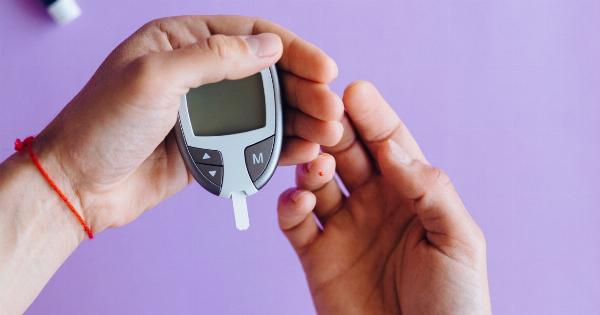Type 2 diabetes is a chronic disease that affects millions of people worldwide. It is characterized by high blood sugar levels, insulin resistance, and an increased risk of heart disease and stroke.
While there is no cure for type 2 diabetes, the good news is that it is highly manageable with the right lifestyle changes, including diet.
Understanding Type 2 Diabetes
Type 2 diabetes is a condition where your body cannot properly use insulin, a hormone that regulates glucose (blood sugar) levels in your body.
Insulin is produced by the pancreas, and in people with diabetes, insulin is either not produced or not used effectively. This leads to an increase in blood sugar levels, which can cause a variety of health problems.
Type 2 diabetes is often preventable and can be managed through lifestyle changes such as diet, exercise, and weight loss.
However, if left untreated, type 2 diabetes can lead to serious complications such as cardiovascular disease, kidney disease, nerve damage, and blindness.
The Reversal Diet for Type 2 Diabetes
The reversal diet for type 2 diabetes involves making changes to your eating habits in order to control blood sugar levels and promote optimal health. Here are some key principles of the reversal diet:.
1. Focus on whole, nutrient-dense foods
The reversal diet emphasizes eating whole, nutrient-dense foods that are rich in vitamins, minerals, and fiber. Examples of these foods include:.
- Leafy greens like spinach, kale, and collard greens
- Non-starchy vegetables like broccoli, cauliflower, and peppers
- Healthy fats like avocado, nuts, and olive oil
- Lean proteins like chicken, fish, and tofu
- Whole grains like quinoa, brown rice, and barley
By focusing on these foods, you will be able to improve your overall health while also controlling your blood sugar levels.
These foods are also naturally low in calories, which can help with weight loss – another important factor in managing type 2 diabetes.
2. Avoid refined carbohydrates and sugary foods
Refined carbohydrates and sugary foods are high in calories and can cause blood sugar levels to spike, leading to insulin resistance and other health issues. Examples of these foods include:.
- White bread, pasta, and rice
- Candy, soda, and other sugary drinks
- Baked goods like cookies, cake, and pastries
- Processed snacks like chips and crackers
Avoiding these foods can help you maintain more stable blood sugar levels and reduce your risk of developing health complications.
3. Manage portion sizes
While it is important to focus on eating healthy foods, it is also important to manage portion sizes. Eating too much of any food can lead to weight gain, which can make it more difficult to manage type 2 diabetes.
Here are some tips for managing portion sizes:.
- Use smaller plates to control how much food you are eating
- Measure your portions using measuring cups or a food scale
- Eat slowly and savor your food to help you feel more satisfied with smaller portions
4. Stay hydrated
Drinking water throughout the day is important for overall health, but it is especially important for people with type 2 diabetes.
Drinking water can help you control your blood sugar levels and reduce your risk of dehydration, which can lead to complications like kidney damage.
Try to drink at least 8-10 glasses of water per day, and limit your intake of sugary drinks like soda and juice.
5. Get regular exercise
Regular exercise is an important part of managing type 2 diabetes. Exercise can help you control your blood sugar levels, improve your overall health, and reduce your risk of complications like heart disease and stroke.
Try to get at least 30 minutes of moderate-intensity exercise most days of the week. This can include activities like brisk walking, cycling, or swimming.
You can also incorporate strength training exercises like weight lifting or yoga to help build muscle and burn calories.
Conclusion
Type 2 diabetes is a chronic condition that requires ongoing management, but it is highly manageable with the right lifestyle changes.
By following the five principles of the reversal diet – focusing on whole, nutrient-dense foods, avoiding sugary and refined foods, managing portion sizes, staying hydrated, and getting regular exercise – you can take control of your health and live a long, healthy life.





























